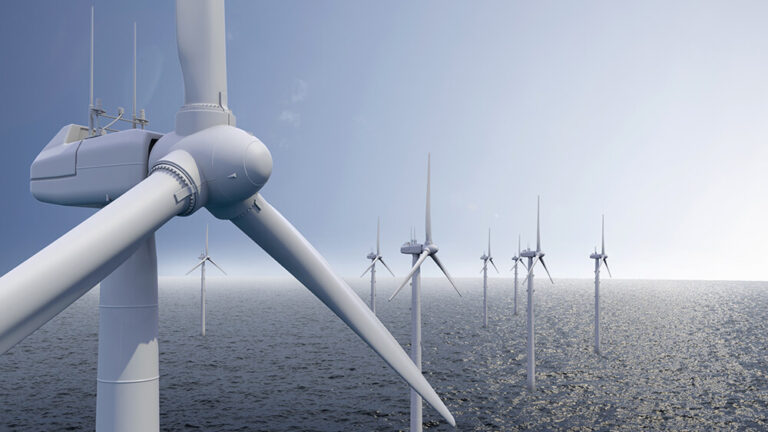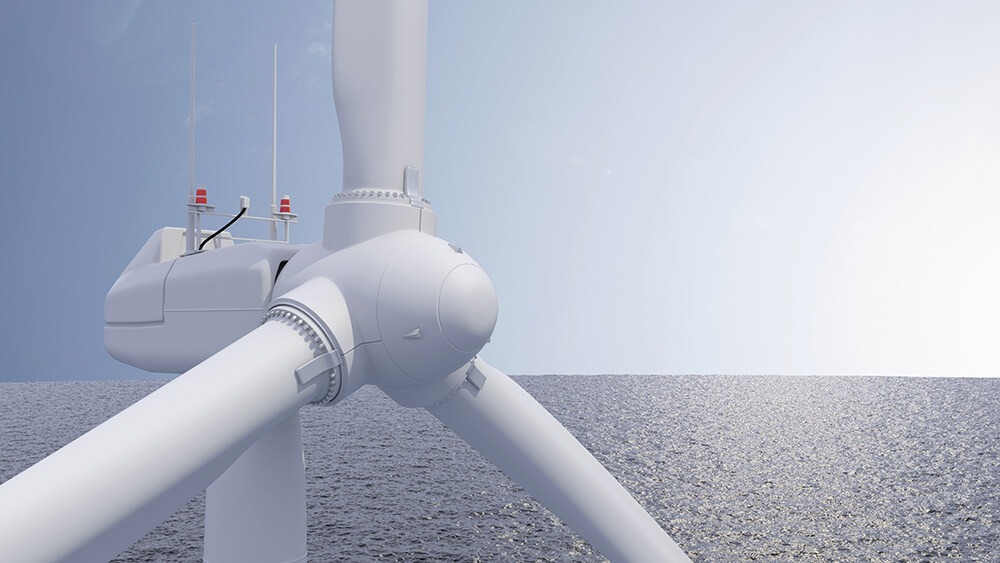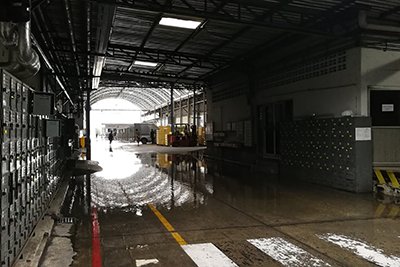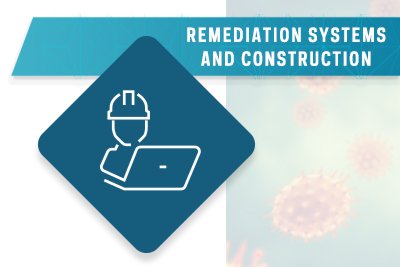The support structure of an offshore wind turbine — its tower and foundation — accounts for roughly one quarter to one third of the capital cost of an offshore wind farm. But despite that significant value, not all developers monitor the structural performance of wind turbines. By equipping offshore wind turbines with instrumentation when they are installed, we can validate design assumptions, assess performance, proactively monitor for potential maintenance needs, and potentially extend the design life of the turbines, which protects the investment in renewable energy made by developers (and taxpayers, through government subsidies).
Add instrumentation before installation to better monitor performance
All offshore wind turbines record data on mechanical performance, power production, and environmental variables such as wind speed and direction. By also providing instrumentation on foundations and support structures before wind turbine installation, engineers can monitor the effects of installation as well as structural performance during the wind turbine’s lifetime. This data can be collected remotely, allowing engineers to confirm assumptions made during foundation design and monitor for any potential changes in performance which might indicate the need for maintenance (e.g., a developing scour issue).
Because offshore wind turbines are subjected to dynamic loads from wind and waves, as well as the mechanical loads from spinning blades, the natural frequency of the structure (the frequency at which the structure “wants” to vibrate ) plays a big role in how the turbine behaves. It’s important to design the structure to avoid loading frequencies that might lead to resonant conditions — think “Galloping Gertie” and the dynamic conditions that led to the Tacoma Narrows Bridge collapse in 1940 — but estimating the natural frequencies of a wind turbine is not an easy thing for engineers to do. Using instrumentation to monitor the movement of the turbine after installation is the only way to know its natural frequencies with certainty.
Most offshore wind turbines are supported by monopile foundations — piles which can be as big as 30 feet in diameter (or bigger, if the increasing trend of turbine size continues). These piles experience large stresses when they are driven into the seafloor during installation, which represent a significant portion of the fatigue design life of the structure. Driving stresses can be difficult to predict, and natural variations in soil can lead to discrepancies between calculated pile driving effort and the realities of construction — which means that it is possible for foundations to be over- or underdesigned for the lifetime of loading they are expected to endure. By monitoring piles during installation, engineers can better understand the fatigue capacity for the design life of the pile.
Long-term benefits of structural monitoring

Environmental loading from wind and waves is highly uncertain. Design codes and guidelines help engineers predict the loads that an offshore wind turbine must resist during the design life of the structure, but these loads are estimated using statistical methods based on historical data. The U.S. East Coast experiences annual hurricanes, and we expect these storms will increase in both frequency and intensity because of climate change: the extreme loads calculated today (based on historical data) may underpredict the extreme loads in the future design life of the turbines.
Structural monitoring can help manage the impact of these intensifying storms by providing real-time data on how turbine structures weather the storms’ effects. Engineers can look for potential differences in structural performance after the storms have passed, which can then inform maintenance decisions. For example, instrumentation data may show that there is no change in structural performance after a major storm occurs, which may have exceeded original design storm loading; alternatively, data may show that structural behavior changed after the storm passed, which would require closer assessment to make sure the turbine can continue to operate effectively.
Offshore wind turbines are typically designed for a lifetime of about 25 years — but what happens after that? Many onshore wind turbines in the United States are approaching the end of their design life and are being successfully recertified or repowered (by replacing the existing turbine and blades with a newer, more efficient model) to continue producing power. Recertification and repowering require engineers to estimate the current-day capacity of the wind turbine structure and justify that the turbine can continue operating safely. While this can be performed analytically, instrumentation is frequently required to prove that the foundation is performing within the acceptable criteria dictated by the turbine manufacturer. Some important differences exist between offshore and onshore wind turbines that would make this instrumentation data even more powerful:
- Offshore wind turbines are much larger than onshore turbines (the blades of an offshore wind turbine can be twice as long as an onshore turbine’s).
- Offshore winds tend to be stronger than onshore winds (which is also what makes offshore wind turbines so good at producing power).
- Offshore wind turbines experience random wind and wave loading.
- Offshore construction, operation, and maintenance is much more expensive than onshore due to the specialized vessels required, difficulty of access, and limited weather windows (to name just a few complicating factors), raising the bar for getting things right the first time.
Given these differences, developers should take note of the great potential benefit of collecting more data on structural performance. Long-term data from instrumentation may support the reuse of existing structures and foundations beyond the original design life of the turbine, enhancing both the financial and carbon investments made to construct it in the first place.
Contact me using the author links below to learn more about how monitoring the structure of wind turbines can benefit your project.
Published: 10/25/2022
Author

Technical Expert




